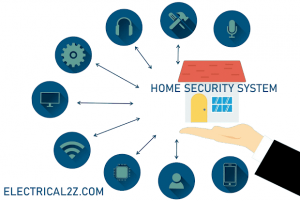How to Control Street Lighting Better | The most common method of control is to run independent street lighting mains from the substation, and operate the control switches manually at the appropriate time each day. The disadvantage is that the substation will have to be manned; provision of independent street lighting mains to all out laying areas is also costly. The difficulty can be overcome by one of several ways:-
Control Street Lighting
1. Group control of lights in different localities. This necessitates provision of a separate street lighting circuit in each are only and not right from the substation. Some recurring expenditure will also have to be incurred as wages for a low paid fuse man to go round and operate the switches daily, but this cost can be partially justified, since in most distribution systems someone will have to be available on call for emergency duty, to attend to failures. He could as well be detailed to switch on and switch off street lights and incidentally make a note of lamps which require renewal.
2. Another method of group control is by installing a time switch which is available in three forms i.e. hand wound, electrically wound or electrically operated with spring storage. The last of types described is the most convenient since the switching on and off times will remain unaltered even if there should be a failure of supply for a short while. The electrically operated time switch uses a self starting synchronous motor, which will keep very accurate time if the mains supply is frequency controlled. Fitted with a solar dial the time switch automatically takes care of seasonal variations in sunset and sunrise times.
3. Alternatively, a photoelectric or cadmium cell could be employed for automatic control of street lights. The electrical resistance of both the sensitive elements varies with the amount of light falling on them which could be made use of for controlling street lights through a valve or transistor operated relay. In this arrangement variations in light intensity are viewed by the photocell trigger a thyratron valve and operate a relay which could in turn switch on or off a considerable amount of power through a contactor. The exact level of twilight at which the photocell should operate can be readily adjusted by a control knob.
4. An ingenious modern development is the ripple control system. Under this, an audio frequency signal is injected into the power mains at eh main substation, from where it passes to all parts of the distributed system. At selected control points, specially tuned receivers are provided which respond to the audio frequency control signals and operate local contactors, which in turn control supply to the street lights or any other circuits desired. There could be several control frequencies allocated for different functions, such as control of electric sirens, street lights, off peak power loads etc. permitting remote control of switches located far away from the control point, without requiring any other conductor than the mains. It is very economical and convenient.
Final Word
Hope you understand this article about the How to Control Street Lighting Better. Incase of any doubt please comment below. Subscribe our website to get every new post update to your email. Please follow our website @ElectricianWorld.Net for future updates. Thank you for visiting our website.



